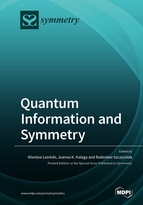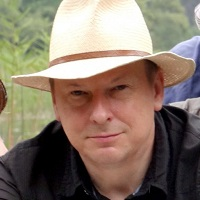Quantum Information and Symmetry
A special issue of Symmetry (ISSN 2073-8994). This special issue belongs to the section "Physics".
Deadline for manuscript submissions: closed (15 January 2020) | Viewed by 16788
Special Issue Editors
Interests: quantum and nonlinear optics; quantum information theory; deterministic chaos; quantum chaos; cellular automata
Special Issues, Collections and Topics in MDPI journals
Interests: quantum optics; quantum information theory; quantum chaos; deterministic chaos
Interests: solid state physics; superconducting; quantum information theory; chaos theory
Special Issue Information
Dear Colleagues,
Recent research in the fields related to the quantum information theory (QIT) became one of the most intriguing and promising investigations in contemporary physics. Many novel QIT concepts are discussed in the literature, and the broad range of new models of quantum optics and solid state physics are recently considered in the context of QIT. For instance, new ideas concerning optical lattices, superconducting devices, nano-resonators, circuit QED models, nonlinear Kerr-like systems were topics of the numerous papers. Such articles were devoted not only to various aspects of quantum correlations such as quantum entanglement, quantum steering, EPR correlations or quantum discord but also to more practical proposals of the systems which could be applied in the quantum teleportation, quantum coding, quantum computing, etc. On the other hand, the ideas of symmetry are widely discussed in all physical sciences. They have become keystones of various concepts and considerations leading to the novel discoveries in physics. Thus, this Special issue is devoted to the broad range of QIT topics which are related to the ideas of symmetry. We would like to invite all Colleagues to submit their original research, review and short communication articles to the issue. Both theoretical and experimental submissions are welcome.
Prof. Wiesław Leonski
Dr. Joanna K. Kalaga
Prof. Radosław Szczęśniak
Guest Editors
Manuscript Submission Information
Manuscripts should be submitted online at www.mdpi.com by registering and logging in to this website. Once you are registered, click here to go to the submission form. Manuscripts can be submitted until the deadline. All submissions that pass pre-check are peer-reviewed. Accepted papers will be published continuously in the journal (as soon as accepted) and will be listed together on the special issue website. Research articles, review articles as well as short communications are invited. For planned papers, a title and short abstract (about 100 words) can be sent to the Editorial Office for announcement on this website.
Submitted manuscripts should not have been published previously, nor be under consideration for publication elsewhere (except conference proceedings papers). All manuscripts are thoroughly refereed through a single-blind peer-review process. A guide for authors and other relevant information for submission of manuscripts is available on the Instructions for Authors page. Symmetry is an international peer-reviewed open access monthly journal published by MDPI.
Please visit the Instructions for Authors page before submitting a manuscript. The Article Processing Charge (APC) for publication in this open access journal is 2400 CHF (Swiss Francs). Submitted papers should be well formatted and use good English. Authors may use MDPI's English editing service prior to publication or during author revisions.
Keywords
- quantum optics
- solid state physics
- symmetry of quantum states
- PT-symmetric Hamiltonians
- nano-cavities
- circuit QED
- Copper pairs systems
- quantum state engineering
- EPR correlations
- quantum entanglement
- discord and steering







